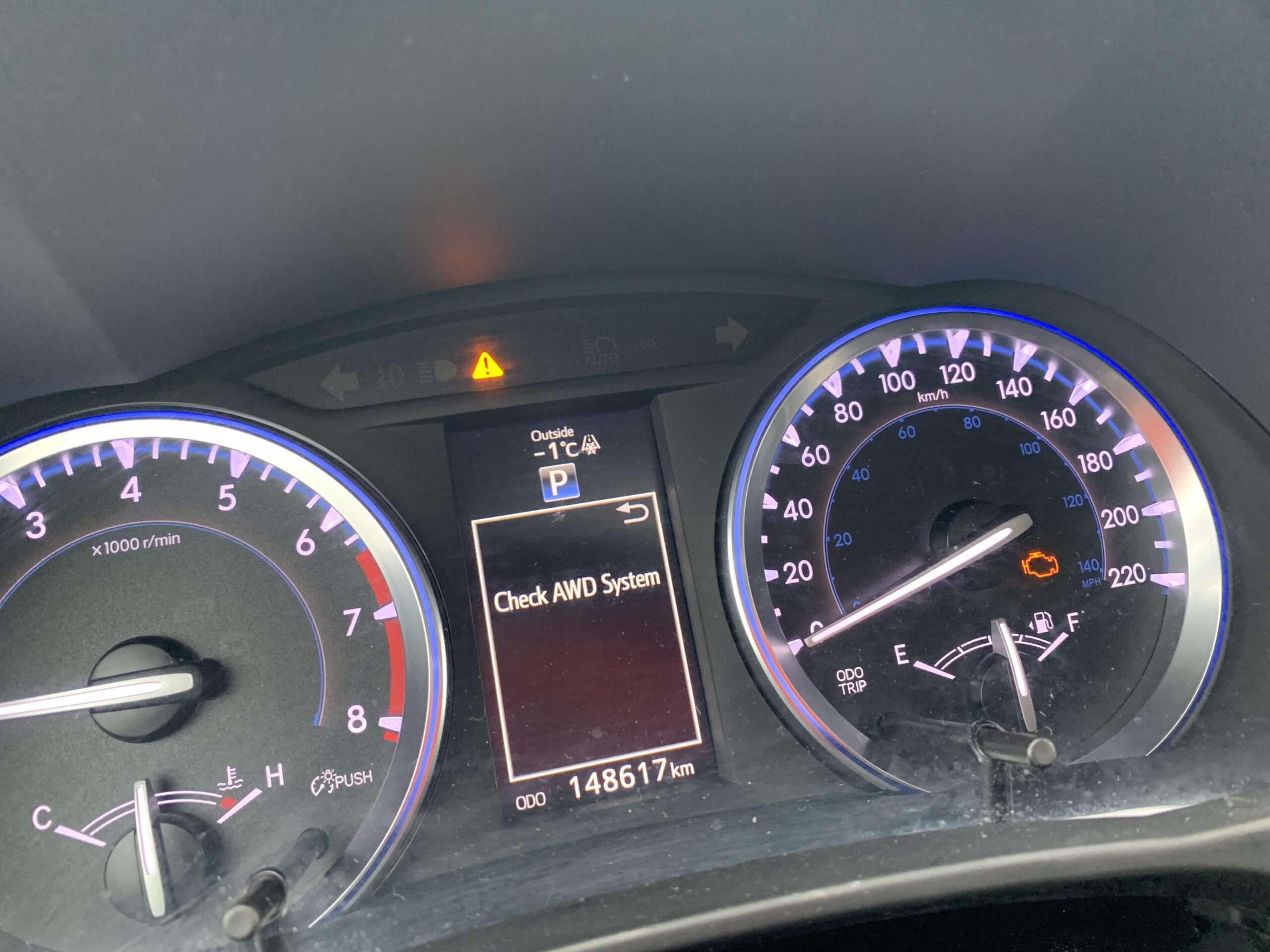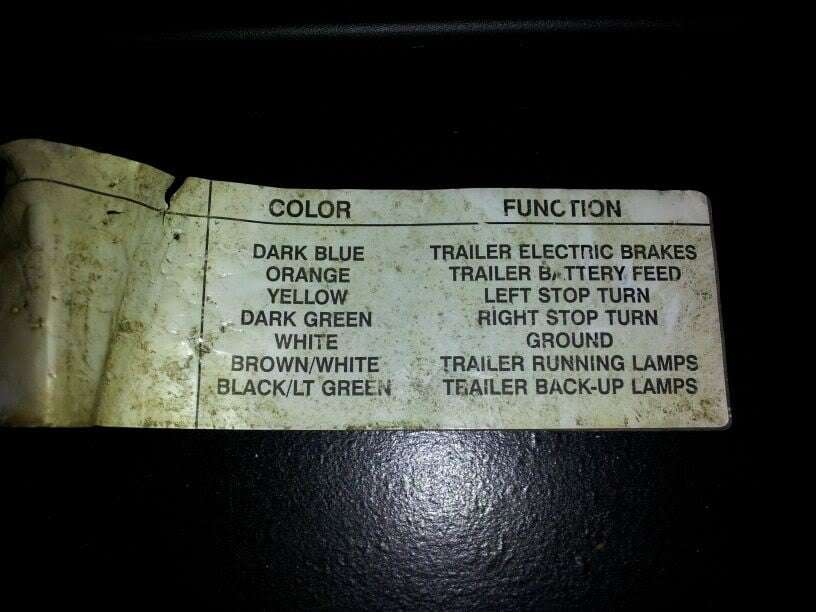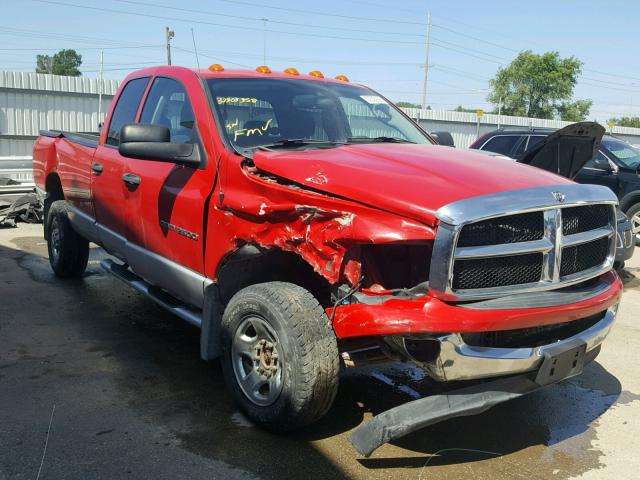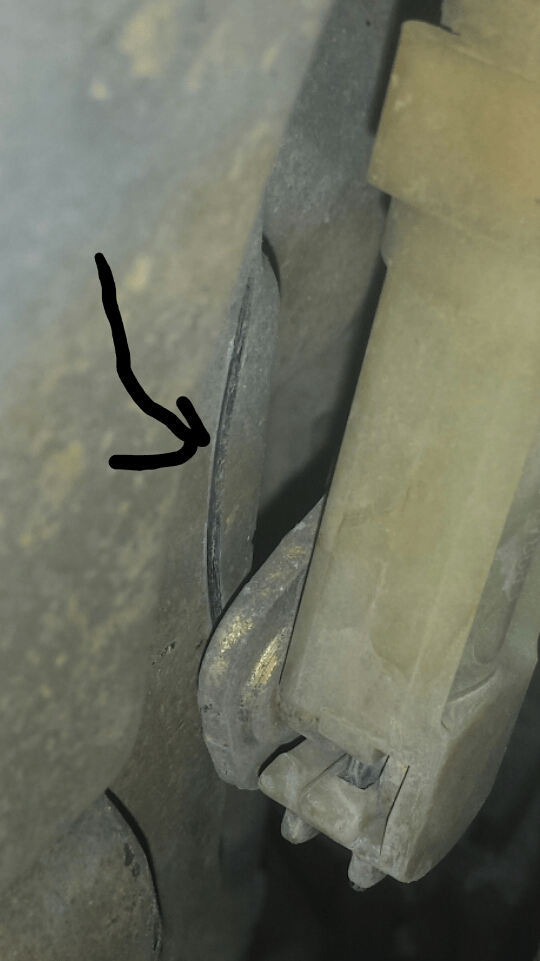Key takeaways
- Understanding tire codes is essential for selecting the correct tire for your vehicle. Codes on the tire indicate tire width, aspect ratio, construction type, and wheel diameter.
- Tire symbols and ratings, such as M&S and DOT ratings, are important indicators of tire performance and suitability for different weather conditions.
- There are various types of tires, including passenger, LT, ST, BSL, and XL tires, each designed for specific purposes and vehicles. It is important to choose the right type of tire to ensure safety and performance.
Understanding Tire Codes
As a driver, it’s important to know how to read tire sidewalls in order to ensure optimum safety and performance on the road.
Understanding tire codes is a crucial part of this process. So, let’s take a look at the various codes that you’ll find written on your tires.
For instance, what does OWL mean on tires? And, what do the different codes on the tires mean?
We’ll also delve into important factors such as tire rating, tire width, aspect ratio, R- radial construction, wheel diameter, and load rating.
What does OWL mean on tires?
One of the common queries in tire codes is what OWL means on a tire. OWL stands for “Outlined White Lettering,” which is raised white lettering placed on the sidewall of tires.
It gives an aesthetic appeal to cars and distinguishes its look from other tires.
When OWL appears on a tire code, it means that the tire manufacturer constructed it with white lettering around the perimeter of the sidewall facing toward the outside surface of your vehicle.
They are usually found on high-performance and touring tires but are not recommended for severe winter use as ice and snow can accumulate in these grooves, affecting traction.
Tire manufacturers do not specify any maintenance routines to preserve the outlined white letters, but mild soap and water can help remove dirt and debris from further damaging them.
Pro Tip: Always check with local authorities if any laws prohibit driving with high-performance tires or outlined white letterings before making any purchase decisions.
Tire codes are like secret messages from your car, and deciphering them can be just as exciting as cracking a code in a spy movie.
What do the codes on the tires mean?
The numbers and letters on the tire sidewall contain information about the tire’s characteristics, size, construction, and performance.
Understanding them can help ensure that you choose the right tires for your vehicle, driving style, and conditions.
Below is a table that describes what the codes on the tires mean:
| Code | Meaning |
|---|---|
| Tire Size Numbering System | Describes tire width, aspect ratio, and wheel diameter |
| Speed Rating | Maximum speed at which the tire can be safely driven |
| Load Index | Maximum weight capacity of the tire |
| UTQG | Uniform Tire Quality Grading system; measures treadwear, traction, and temperature resistance |
It’s crucial to note that each manufacturer has its unique system for coding. Therefore it would be best to refer to your car owner’s manual or manufacturer’s guidelines for specific information.
Understanding these codes can also help in making informed decisions when choosing new tires.
For example, if you want a smooth ride with better handling and durability at high speeds then go for H-rated or V-rated tires. The higher the speed rating of a tire is an indication of its capabilities such as heat resistance.
Finally, before purchasing or changing your tires, consider consulting with a professional mechanic or dealer to ensure that you understand all aspects of what different codes mean on tires.
Choose your tire rating like you choose your partners – carefully, and with consideration for your safety.
Tire Rating
The rating of a tire is important because it informs buyers about the ability of the tire to meet various conditions and perform specific functions.
The rating system includes speed rating, load index, and performance indicators such as traction, temperature resistance, and treadwear.
| Tire Rating | Description |
|---|---|
| Speed Rating | Indicates the maximum speed a tire can handle safely |
| Load Index | Determines the maximum weight each tire can carry without breaking down |
| Traction | Assesses how well tires grip wet roads for stopping power |
| Temperature | Measures how well tires dissipate heat to stay cool and maintain proper pressure |
| Treadwear | Predicts the durability of the tire in terms of mileage |
In addition to these ratings, some manufacturers provide additional information such as rolling resistance and noise level. These can impact fuel efficiency and driving comfort.
It’s essential to evaluate all relevant factors before selecting tires that fit your driving needs.
For optimal performance and safety of your car, ensure that your tires meet all required ratings and specifications.
Consider replacing them periodically based on driving conditions or wear indications like balding or cracking. Check regularly for correct pressure levels according to recommended standards from the manufacturer.
Why settle for narrow-minded tires when you can get a wide load?
Tire Width
The dimensions of a tire determined by measuring the distance between two opposite points on the tire’s surface in the horizontal plane are known as the ‘Tire width.’
When looking at a tire, there are three sets of numbers that you’ll typically find together. The first set stands for the width of the tire, measured in millimeters.
For Example, a tire with an aspect ratio of 70 will have a higher sidewall than one with a 50-series aspect ratio. In simple terms, the sidewall height in relation to the section width is called the aspect ratio.
| Tire Size | Width (mm) | Aspect Ratio |
|---|---|---|
| 215/60R16 | 215 | 60 |
| 195/55R16 | 195 | 55 |
| 235/45R17 | 235 | 45 |
It’s important to note that it’s not just about how wide or narrow your tires are but how these measurements impact your driving experience.
Whether you’re buying new tires or having old ones replaced, understanding what each measurement means and how it impacts your vehicle’s performance can help you make informed decisions.
Interestingly, before tires were introduced in their modern form, early wheels such as wooden cart wheels had no rubber padding and could be incredibly uncomfortable to ride on without any cushioning from paved roads.
Your tire’s aspect ratio is basically its waist-to-hip ratio but for cars.
Aspect Ratio
The proportion of the sidewall height and tire width is what is commonly referred to as the “Aspect Ratio.” It is a numerical code that can be found on the sidewall of tires.
| Aspect Ratio | Numerical Code | Calculation Formula |
|---|---|---|
| Low Profile Tires | < 70 | (tire width x aspect ratio) / 100 = sidewall height in millimeters (mm) |
| Tall Profile Tires | > 70 | (tire width x aspect ratio) / 100 = sidewall height in (inches) |
It is worth noting that a low number or a lower aspect ratio means shorter and wider, while a high number or taller aspect ratio represents higher and narrower shoulders.
Tire aspect ratios influence several performance attributes such as handling, traction, steering response, ride comfort, and fuel efficiency.
Notably, a more giant aspect ratio results in improved ride comfort since there’s increased cushioning between the wheel and road surface.
A common misconception regarding the importance of tire aspect ratios is held by first-time buyers.
They think that bigger looks mean a better fit for their vehicle, which isn’t necessarily true. It’s always essential to refer to manual guides before installing your new tires.
Recently, an incident occurred where Benj caught himself stuck on a remote trail with his truck slid into a ravine.
Later, upon examination, he realized he had the wrong set of tires installed against OEM suggestions citing incorrect Aspect Ratios as one key reason.
Additionally, R is for radial construction, not for ‘race car’ like your neighbor’s Honda with a loud exhaust.
R = Radial Construction
The tires stamped with “r = radial construction” have a unique internal structure. Instead of using bias construction, they use cords that extend from one bead of the tire to the other through the center of the tire. These cords are laid perpendicular to each other and wrapped with rubber under high pressure.
This design results in less rolling resistance, lower heat generation and better fuel economy while maintaining ride comfort and handling.
Additionally, these tires offer additional grip on both wet and dry pavements due to their flexible sidewalls that enable better contact between the tire and the surface.
Moreover, they have a longer lifespan than bias-ply tires because their structure distributes wear more evenly across the tread.
It’s imperative to understand r = radial construction before purchasing tires as it affects the vehicle’s overall performance and safety.
Opting for radial tires is always recommended as it enhances control at high speeds and reduces braking distance without compromising comfort.
If possible, avoid combining radial tires with bias-ply or cross-ply tires due to differences in handling characteristics.
Finally, ensure proper care by regularly rotating your tires every 6 months or 6,000 miles to maintain even wear over all four wheels.
Size matters: Understanding wheel diameter and how it affects your ride.
Wheel Diameter
The size of a tire’s wheel opening is often referred to as the “diameter of the wheel.” Knowing this measurement is important because it determines what size tire can be safely mounted on a given vehicle.
The following table shows The Common Wheel Diameters and their usage:
| Column 1 | Column 2 |
|---|---|
| 13″ | Small cars, subcompacts |
| 14″ | Small and midsize cars |
| 15″ | Midsize and full-size cars, some pickup trucks, SUVs |
| 16″ | Larger trucks and SUVs |
| 17″ | Full-size pickups and SUVs |
It is important to note that increasing the wheel diameter also affects other tire characteristics such as ride comfort, handling ability, and fuel economy. Consult your owner’s manual or speak with a professional to ensure any changes to your vehicle’s wheel diameter are safe and appropriate.
Pro Tip: Choose the wheel diameter based on your car model specifications rather than just going for a bigger option for aesthetics.
Load up your knowledge on load ratings and never overload your tires again.
Load Rating
The Load Capacity of a tire is a crucial indicator of its ability to carry weight and withstand pressure.
Load Rating is used to determine the maximum weight a tire can safely carry based on its size, construction, and speed rating.
The standardized Load Index ranging from 0 to 279 reflects the maximum load capacity in kg or lbs corresponding to each index number.
| Load Index | Pounds | Kilograms |
|---|---|---|
| 71 | 761 | 345 |
| 72 | 783 | 355 |
Higher Load Ratings mean greater carrying capacity and tires with higher Load capacities are usually more durable and long-lasting.
A tire with an adequate Load Rating ensures safety and stable handling while driving under heavy loads.
Pro Tip: It is not recommended to substitute a tire with a lower Load Rating than specified by the manufacturer as it may lead to irreversible damage and accident hazards.
Reading tire symbols is like deciphering a secret code that only mechanics and tire nerds can understand.
Tire Symbols and Ratings
As I stood in the tire shop, waiting to replace my worn-out tires, I found myself gazing at the seemingly cryptic symbols on the tire sidewalls.
It was then I realized the importance of understanding what each symbol or rating meant.
In this segment, I have highlighted two essential sections that every driver must know. The first sub-section talks about the M&S symbol seen on most tires and what it actually represents.
And the second sub-section outlines the significance of the DOT Rating, which can determine the safety of a tire. Let’s dive into the details to learn more about these critical tire symbols and ratings.
What Does M&S Symbol On Tire Mean?
The M&S symbol on a tire is short for Mud and Snow, indicating that the tire is designed to provide better performance in snowy or muddy conditions.
It doesn’t necessarily mean they are winter tires, but instead, all-season tires intended to handle snow and mud well.
Such tires have a unique tread pattern design providing better grip on such surfaces. These tires also have sipes – small slits in the rubber – to help them bite into ice for improved traction.
These types of tires are suitable for regions that regularly receive moderate snowfall or places with high rainfall. However, it is essential not to confuse M&S-rated tires with winter-rated ones as the latter has a more aggressive tread pattern for maximum grip on icy roads.
Fun Fact: In 1999 Rubber Manufacturers Association (RMA) introduced a new mountain/snowflake symbol that indicates the tire meets specific certifications required for use in severe snow conditions.
Don’t underestimate the power of DOT – it’s not just a department of transportation, it’s a lifeline for safe driving.
Why Is The DOT Rating On the Tire Important?
The importance of the DOT rating on a tire cannot be overstated. The Department of Transportation requires every tire to have a DOT code that indicates its manufacturing location, week and year of production, and other vital details like material composition. This information helps in determining the tire’s durability and safety.
The DOT rating is key as it outlines critical data such as design, construction and performance standard qualifications (such as FMVSS) that are vital for determining the safety level of a particular tire.
It guides drivers when shopping for tires by providing accurate measurements such as load-carrying capacity, inflation pressure, tread life expectancy, temperature resistance rating, and traction quality.
It is also essential for recall campaigns or during repairs to identify defective tires.
Notably, having a DOT rating doesn’t necessarily infer that the tires meet all federal regulations for sale on the roadways; therefore it’s important to look out for additional symbols printed on the sidewall that represent compliance with rigorous tests done by independent organizations such as TÜV SÜD or ECE.
It’s best always to examine your tires when making purchases or scheduling maintenance on your vehicle. A driver must check everything from balancing and alignment requirements to maintaining air pressure correctly as all these factors impact your DOT-coded tire.
In summary, understanding the importance of reputable products with precise ratings can significantly reduce risks and improve overall driving conditions.
Choosing the right tire type is like picking the right pair of shoes for your car but with way more pressure.
Types of Tires
As I was researching how to read a tire sidewall, I came to realize that it’s not as simple as it seems.
One of the most fundamental aspects of understanding tire sidewalls is being able to identify the type of tire you have. There are various tire types available in the market, each designed for different purposes.
In this segment, I’ll be covering the different types of tires you’ll come across – passenger, LT, ST, BSL, and XL tires. Knowing the differences between these tire types is crucial for ensuring you get the best performance from your vehicle on the road.
Passenger Tires
- They come in a variety of sizes suited to different vehicle makes and models.
- They have lower speed ratings than performance or sports tires.
- They provide improved fuel efficiency and a quieter ride compared to other types of tires.
- Their tread patterns vary depending on the intended use, such as all-season, summer, or winter driving.
- They typically have a shorter lifespan than other types of tires due to their softer rubber compound.
Passenger Tires also may have different load capacities, speed ratings, and measurements for side walls from one another. A customer should always check these specifications before purchasing new passenger tires.
Pro Tip: Make sure to rotate your passenger tires every 5,000-7,500 miles or earlier if any irregular wear is noticed. This will help maximize the longevity of the set of four.
Light truck tires are like the burly bouncers of the tire world, ready to handle heavy loads and rough terrain.
LT Tires
Light truck tires, commonly known as LT tires, are designed and built for special vehicles such as pickup trucks, SUVs, and vans.
- LT tires have stronger sidewalls than regular passenger tires.
- They can carry heavier loads due to their increased load capacity.
- LT tires provide better performance on uneven road surfaces and off-road conditions.
- They offer longer tread life compared to regular passenger tires.
In addition to these advantages of LT tires, they also come in different sizes and types to suit specific vehicle requirements.
A true fact is that according to the US Tire Manufacturers Association (USTMA), in 2020, LT tire shipments in the US increased by 6.9% compared to the previous year.
Why settle for a boring tire when you can upgrade to an ST tire for your trailer adventures?
ST Tires
ST (Special Trailer) Tires are manufactured to withstand high load requirements and are specially designed for trailers. They have sturdier sidewalls, which provide greater stability under heavy loads and during cornering. ST tires come with a speed rating of 65 mph or less, as they are not designed for high-speed use.
ST tires are typically used on boat, utility, and camper trailers. Unlike passenger vehicle tires, they have higher Load Range ratings that allow them to carry heavier loads without the risk of deformation or failure. It is important to note that ST tires should never be substituted with passenger car tires as they cannot handle the weight requirements of trailers.
It is advisable to replace ST tires after three to four years of service regardless of their condition. Additionally, it is recommended to always carry a fully inflated spare tire when using ST tires on trailers.
Ensure your trailer’s safety while on the road by choosing reliable ST Tires. Don’t compromise on quality; choose tires that will keep you safe while towing your valuable cargo.
BSL tires: Because sometimes you just need that extra letter to make your tires feel more important.
BSL Tires
Tires marked with BSL stand for Black Side Wall tires, which means that the sidewalls of these tires are black instead of white or other colors. BSL tires are relatively cheaper than their white side wall counterparts and are frequently fitted on standard sedans and minivans.
These affordable tires offer good handling stability, wear resistance, and better fuel efficiency.
The black sidewalls offer more durability as they won’t show scuffs or marks as often as colored sidewalls.
Moreover, BSL tires provide a better contrast to the tread design pattern, making it easier to identify different terrains and improve grip in wet conditions.
It is noteworthy that the BSL Tires need different care compared to white sidewall tires.
Mechanically cleaning the sidewall can lead to permanent damage, whereas using mild soap water should suffice to maintain tire cleanliness.
Historically, White Sidewall Tires were known for being status symbols among car owners in the 1960s and 1970s. White Sidewall Tires were used mostly on executive cars such as Lincoln Continental or Cadillac DeVille models.
However, modern manufacturers have switched to using black sidewall tires globally for easy maintenance and affordability.
XL Tires: Because sometimes you just need a little extra cushion for the pushin’.
XL Tires
The large tires, often referred to as Extra Load Tires, can carry a heavier load with a higher inflation pressure as compared to conventional automotive tires. They are designed for heavy-duty vehicles and trucks.
| Feature | Description |
| Load Range/ Ply Rating | The XL tires have a higher ply rating which makes them capable of carrying extra loads than standard tires. |
| Inflation Pressure | They require a higher air pressure than standard tires to improve load-carrying capacity, stability, and durability. |
| Tread Pattern | The tread pattern on these tires is robust and designed to provide better traction and durability on rough terrains. |
One unique characteristic of XL Tires is that they have wider sidewalls, which help prevent any damage from occurring due to impact with potholes or other road hazards.
This also helps in shock absorption while driving on unpaved roads or rough surfaces.
Make sure you consider buying Extra Load (XL) Tires if your vehicle requires them for heavy-duty transportation needs such as construction equipment hauling or towing caravans.
Do not miss out on the advantages of XL tires!
Before storing your tires, be sure to give them a farewell spin like a carousel horse saying goodbye to summer.
Other Tire Considerations
As I continue my quest to become a tire expert, I’ve discovered a few other important aspects of tires worth exploring.
For instance, did you know that flipping OWL (outline white letter) tires is not recommended? Or perhaps you’re curious about where Hi Run Tires are made?
Additionally, have you ever wondered why race cars have wide tires? And once you’ve found the perfect set of tires, you’ll want to know the optimal way to store them.
Keep reading as we delve into these other tire considerations, backed up by reference data.
Can you flip OWL tires?
When it comes to OWL tires, flipping them is not recommended as it can affect the tire’s performance.
The OWL (Outline White Letters) is found on the sidewalls of some tires and usually indicates a raised white lettering on the tire’s exterior.
However, flipping these tires means that the white letters or symbols will be on the inside, making them less visible and losing their intended aesthetics.
Additionally, flipping tires may also lead to uneven wear patterns and increased chances of failure due to the disruption of tread designs.
It is important to keep in mind that tire flipping should only be done at the manufacturer’s recommendation.
If there are no such recommendations for a specific tire brand or model, then flipping should not be attempted.
It is worth noting that not all tires come with an OWL designation and that these particular types of tires are only available in certain styles and sizes.
For those who prefer plain black sidewalls, considering a non-OWL tire might be more practical.
In history, OWL tires were initially designed for muscle cars in the 1960s-1970s era and essentially became an essential fashion statement for these vehicles.
However, as time elapsed, automakers began providing vehicles with custom wheels with different widths and diameters leading to new challenges in tire design.
Why Do Race Cars Have Wide Tires?
Race cars have wider tires because they provide better traction and grip on the track. The larger contact area of the tire with the ground means more rubber interacting with the surface, allowing for greater acceleration and cornering speeds. Additionally, wider tires can dissipate heat more effectively, reducing the risk of a blowout at high speeds.
Moreover, racing teams carefully select tire width based on factors such as track conditions, car weight distribution, and weather. By adjusting tire size, teams can fine-tune their vehicle’s handling to optimize performance on any given track.
It is important to note that wider tires are not always better in all racing scenarios. In some circuits or weather conditions where grip is not as crucial, smaller tires may be preferred since they offer less rolling resistance and thereby achieve higher speeds.
In fact, there have been instances in professional motorsport where a team has switched to narrower tires mid-race due to changing weather conditions or circuit surfaces. This highlights the importance of real-time tire management and how it can impact race strategies.
Storing the Tires
Proper Tire Storage Techniques
To ensure your tires are in optimal condition for as long as possible, proper storing techniques are crucial. The tips outlined below will help you keep your tires in top shape while they are being stored.
- Clean Your Tires:
Before storing the tires, ensure that they are properly cleaned of any dirt or debris present on them.
- Protect from Sunlight:
Sunlight causes rubber compounds to break down and deteriorate, causing premature cracking on the surface of the tire. Therefore, store your tires in a cool, dry environment away from direct sunlight.
- Store Vertically or Horizontally:
When storing the tires, stack them horizontally or vertically rather than piling them up haphazardly.
- Elevate:
To avoid flat spots on your tire’s surface when not being used for an extended period, it is essential to keep them elevated off the ground.
- Keep Them Covered:
Tires stored outdoors should be covered to prevent prolonged exposure to environmental elements such as rain and snow.
- Check-in Periodically:
Check on your stored tires periodically to ensure they’re free of damage such as cracks and cuts before using them again.
It’s worth noting that there is no one-size-fits-all approach when it comes to storing tires since their storage lifespan depends on various factors like temperature, humidity, etc. However, by following these steps mentioned above, you can be sure that your stored tires remain in good condition for longer periods of time.
According to Firestone Tires company Source
Some Facts About How to Read a Tire Sidewall
- ✔ OWL on a tire means outlined white letters and enhances the tire’s appearance.
- ✔ The tire size code on the sidewall indicates the tire’s size, type, and construction.
- ✔ P-Metric tires are used for passenger vehicles, while LT tires are used for vehicles that carry heavy loads.
- ✔ The DOT rating on a tire is important as it specifies the tire’s age and safety standards it has met.
- ✔ The M&S symbol on a tire means it is suitable for riding on mud and snow and is perfect for all seasons.
Source: Team Research

















